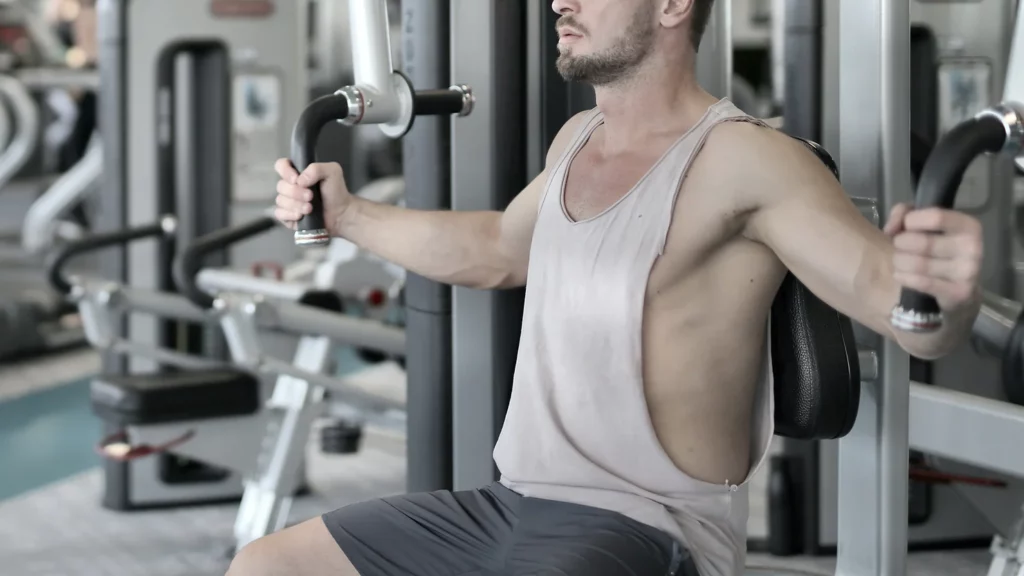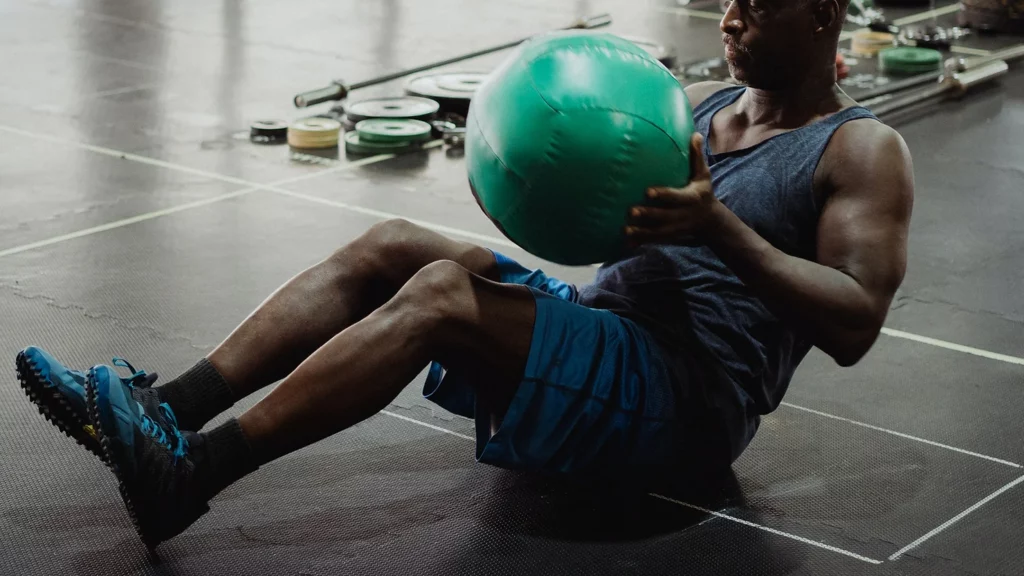What muscles does the cable crossover work?
The pectoralis muscle group is the primary muscle group worked in the cable crossover. This includes the sternal, clavicular, and abdominal heads of the pectoralis muscle. These muscles are activated during the stretch and contraction phases of the exercise. The cable crossover also works the anterior deltoid, middle deltoid, and triceps brachii muscles.
The advantage of the cable crossover is that it allows you to work all three heads of the pectoralis muscle. This is because you can adjust the angle of your body and the position of your hands. This is different from other chest exercises, such as the bench press, which only work the sternal head of the pectoralis muscle.
How to perform the cable crossover?
Before your begin, adjust the pulleys of the cable machine so that they are at shoulder height. Select the appropriate weight for your fitness level. If you are a beginner, start with a lighter weight and increase the weight as you get stronger.
To perform the exercise, stand in the middle of the cable machine with your feet hip-width apart. Grab each handle with your palms facing each other. Step forward with your right leg and lunge forward. As you lung, bring your hands together in front of your chest. Return to the starting position and repeat the exercise with your left leg.
You should feel a stretch in your chest and shoulders as you perform the cable crossover. If you feel pain in your shoulders, you may be using too much weight. Cues to focus on during this movement are maintaining a tall posture, keeping your core engaged, and exhaling as you bring your hands together.
Common Mistakes
One of the most common mistakes people make when performing the cable crossover is using too much weight. This can lead to pain in the shoulders and neck. Another mistake is not keeping a tall posture throughout the exercise. This can cause you to round your back and put unnecessary stress on your spine. Lastly, people often swing their arms as they bring their hands together. This takes the focus away from the chest and puts unnecessary stress on the shoulders.
To avoid these mistakes, use a lighter weight and focus on keeping good form. If you feel pain in your shoulders, neck, or back, stop the exercise and seek medical help.
Cable Crossover Variations
There are many variations of the cable crossover. You can change the angle of your body, the position of your hands, and the width of your stance. Here are a few variations to try:
Variation #1: High Cable Crossover
Adjust the pulleys on the cable machine so that they are at shoulder height for the high cable crossover. Grasp each handle in your hands with your palms facing each other. Step forward with your right leg. Bring your hands together in front of your chest. Return to the starting position and repeat with your left leg.
Variation #2: Low Cable Crossover
To perform the low cable crossover, adjust the pulleys of the cable machine so that they are at waist height. Grab each handle with your palms facing each other. Step forward. Bring your hands together in front of your chin. Return to the starting position and repeat the exercise with your left leg.
Variation #3: Wide Cable Crossover
To perform the wide cable crossover, stand with your feet wider than hip-width apart. Adjust the pulleys of the cable machine so that they are at shoulder height. Grab each handle with your palms facing each other. Step forward with your right leg. Then, bring your hands together in front of your chest. Return to the starting position and repeat the exercise with your left leg.
Variation #4: Narrow Cable Crossover
To perform the narrow cable crossover, stand with your feet closer than hip-width apart. Adjust the pulleys of the cable machine so that they are at shoulder height. Grab each handle with your palms facing each other. Step forward with your right leg. Then, bring your hands together in front of your chest. Return to the starting position and repeat the exercise with your left leg.
Variation #5: Single-Arm Cable Crossover
To perform the single-arm cable crossover, adjust the pulleys of the cable machine so that they are at shoulder height. Grab one handle with your right hand and step forward with your right leg. Bring your right hand across your body to the left side of your chest. Return to the starting position and repeat the exercise with your left hand and leg.
Variation #6: Resistance Band Crossover
If you don’t have access to a cable machine, you can still perform the cable crossover exercise with a resistance band. Attach the resistance band to a sturdy object at shoulder height. Grab the handles of the resistance band and step forward with your right leg. Bring your hands together in front of your chest. Return to the starting position and repeat the exercise with your left leg.
Summary
The cable crossover is a great exercise for building muscle in the chest, shoulders, and arms. There are many variations of the exercise that you can try to keep your workouts interesting. Make sure to use good form and focus on your breathing to get the most out of the exercise. Other important cues to keep in mind are to keep your core engaged and to avoid swinging your arms.
Are you looking to get fit? Look no further! Our fitness programs are designed to help you build a strong and aesthetic physique. We also provide easy-to-follow routines that will fit any schedule. With our fitness programs, you'll have the tools you need to build muscle and achieve your fitness goals. Click the link below to get started!



